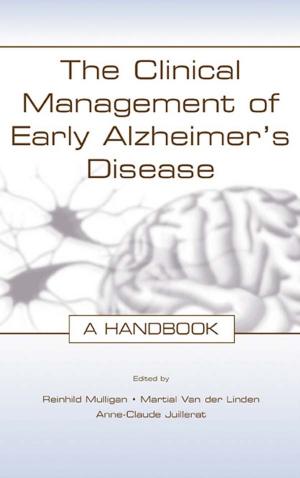Understanding HIV and STI Prevention for College Students
Nonfiction, Reference & Language, Education & Teaching, Student & Student Life, Educational Theory, Educational Reform, Higher Education| Author: | ISBN: | 9781134656622 | |
| Publisher: | Taylor and Francis | Publication: | September 19, 2014 |
| Imprint: | Routledge | Language: | English |
| Author: | |
| ISBN: | 9781134656622 |
| Publisher: | Taylor and Francis |
| Publication: | September 19, 2014 |
| Imprint: | Routledge |
| Language: | English |
According to the Centers for Disease Control and Prevention, young people aged 18 to 25 are at a significant risk for acquiring and transmitting HIV (Human Immunodeficiency Virus) and other STIs (sexually transmitted infections). Primary developmental processes that place college students particularly at risk include the experience of intimacy, sexual desires and the centrality of the peer group. During these routine developmental processes, college students experiment with unprotected sex, multiple sex partners and alcohol and illicit drugs, all of which are contributing risk factors for HIV/STI infections.
Early diagnosis, treatment and prevention of HIV and other STIs is germane to promoting the sexual health of college students and reducing high HIV/STI infection rates among young people. This edited volume will provide innovative and cutting-edge approaches to prevention for college students and will have a major impact on advancing the interdisciplinary fields of higher education and public health. It will explore core ideas such as hooking up culture, sexual violence, LGBT and students of color, as well as HIV and STI prevention in community colleges, rural colleges and minority serving institutions.
According to the Centers for Disease Control and Prevention, young people aged 18 to 25 are at a significant risk for acquiring and transmitting HIV (Human Immunodeficiency Virus) and other STIs (sexually transmitted infections). Primary developmental processes that place college students particularly at risk include the experience of intimacy, sexual desires and the centrality of the peer group. During these routine developmental processes, college students experiment with unprotected sex, multiple sex partners and alcohol and illicit drugs, all of which are contributing risk factors for HIV/STI infections.
Early diagnosis, treatment and prevention of HIV and other STIs is germane to promoting the sexual health of college students and reducing high HIV/STI infection rates among young people. This edited volume will provide innovative and cutting-edge approaches to prevention for college students and will have a major impact on advancing the interdisciplinary fields of higher education and public health. It will explore core ideas such as hooking up culture, sexual violence, LGBT and students of color, as well as HIV and STI prevention in community colleges, rural colleges and minority serving institutions.















